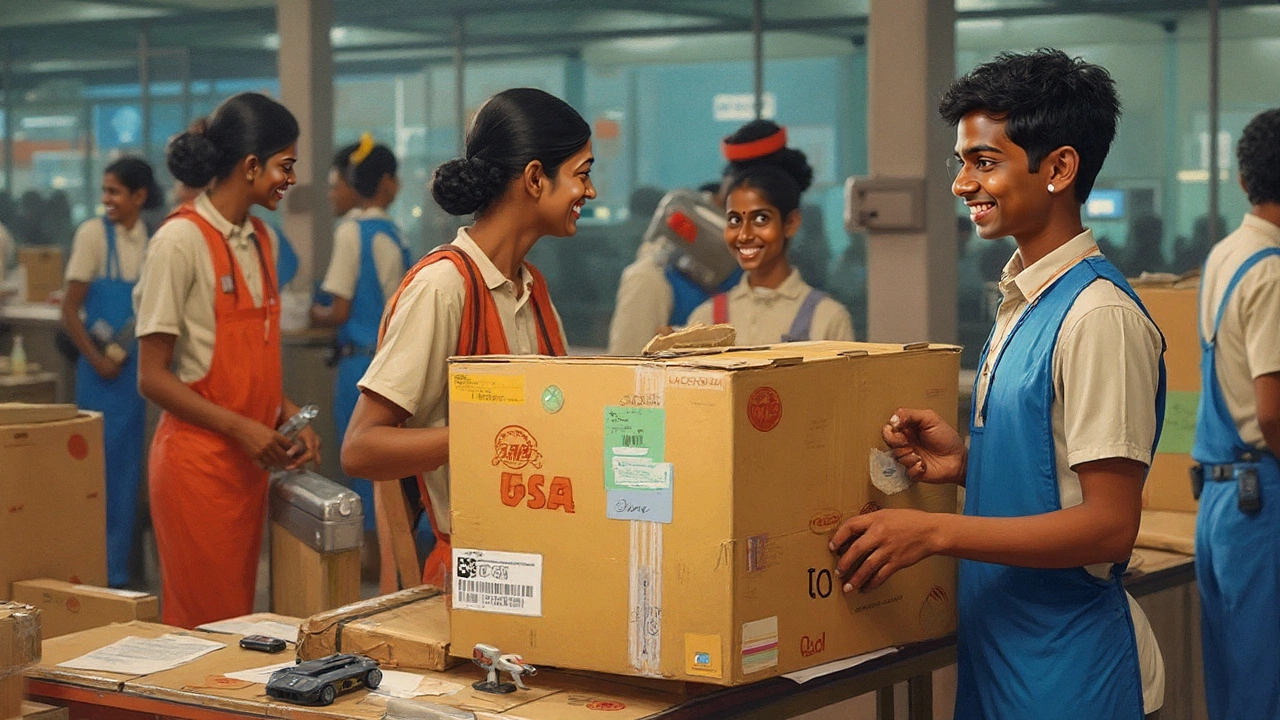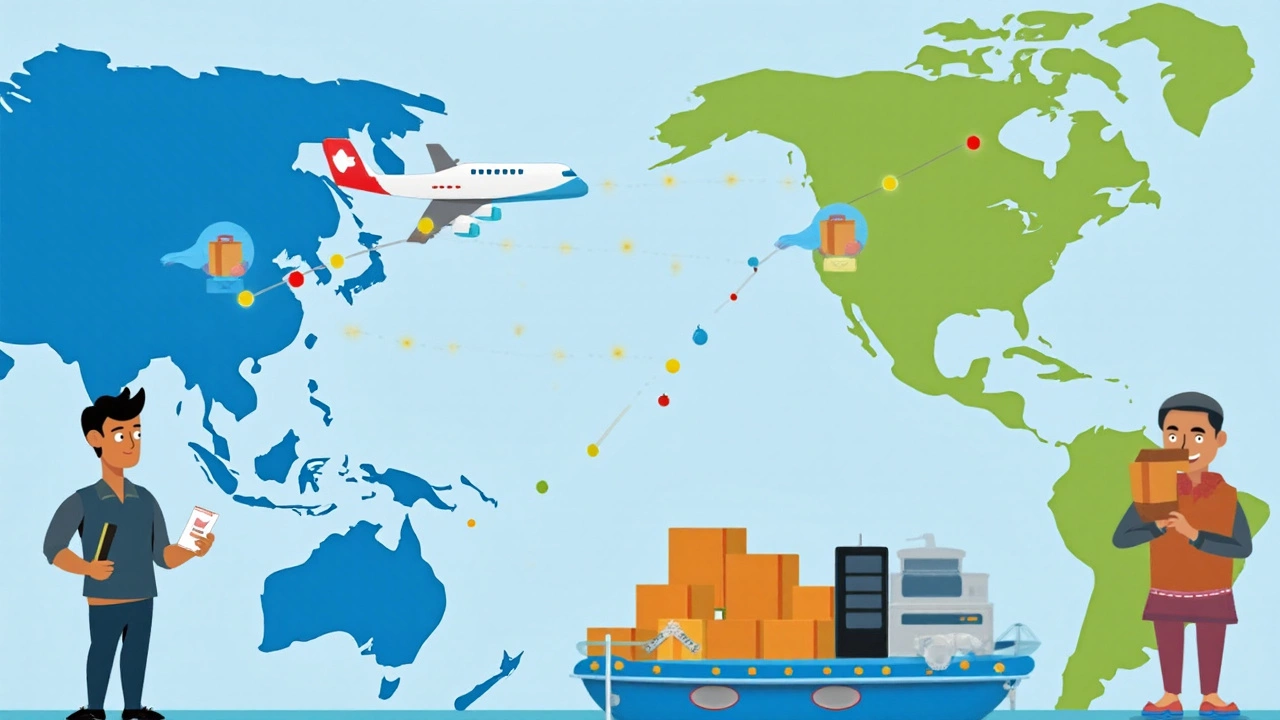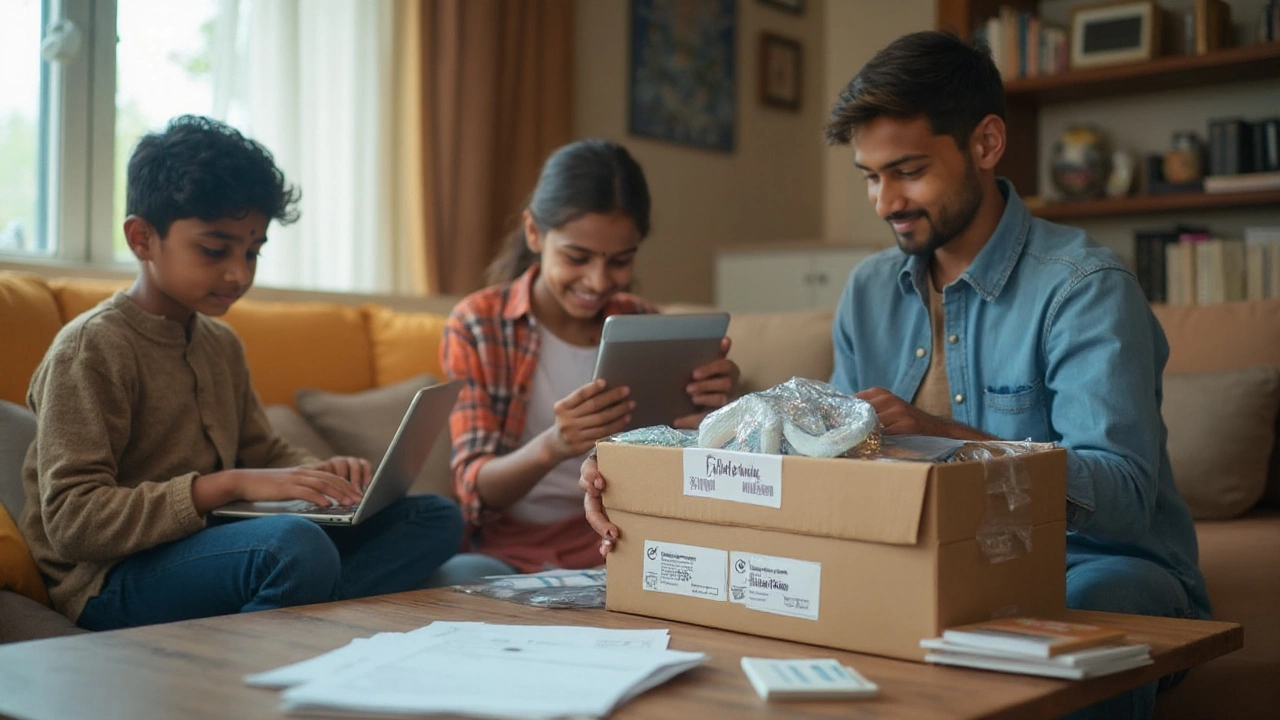So you want to send electronics from India to the USA, but the maze of shipping rules, paperwork, and picky customs has you second-guessing the whole thing. You’re not alone. Indian tech producers—big and small—are eager to reach US buyers, but the ocean between dreams and delivery is filled with red tape, not just water. The good news? Getting electronics across isn’t mission impossible. You just need the right info (and a bit of patience for the bureaucracy).
What Electronics Can You Ship—and What’s Off-Limits?
It feels like you can ship almost anything these days, but US customs isn’t as chill as your favorite online store. First off, ask yourself: is your gadget legal in the States? Sending smartphones, laptops, power banks, or routers? You’re in luck, as long as they’re genuine, safety certified, and not banned or restricted. But if you’re trying to ship surveillance tech, certain drones, or devices with strong encryption, expect scrutiny. Think of it this way—if your gadget could be misused or is tied up in international security concerns, customs will take its sweet time poking around. Also, counterfeit products or gadgets that skip mandatory certifications (like FCC approval for radio communication devices) will hit a concrete wall at the border. Sticking to original, well-documented electronics is your best way through.
It doesn’t stop there. Lithium batteries trigger alarms with American authorities. Power banks and gadgets with built-in lithium cells must follow strict packaging guidelines. No loose cells bouncing around in a parcel! If your shipment ignores these, airlines might refuse it or customs could confiscate it. And, while there’s no blanket ban on refurbished or used electronics, such shipments need clear labeling and honest paperwork. Hiding the fact that your phone is a used one? Customs hates surprises. Want a tip? Always double-check if your product needs any special permits for US import: this includes items like satellite phones, encrypted devices, and sensitive wireless gear.
Packing Electronics Right: Safety, Protection, and Compliance
Bubble wrap isn’t just for fun popping—if you’re shipping anything fragile or pricey, smart packing is key. Let’s talk basics first: protect from jolts, moisture, static, and prying hands. Wrap each device separately with anti-static and cushioning materials. Strong corrugated boxes with double layers work best. Throw in silica gel packs to battle humidity, especially during India’s sticky monsoon months. If you’re sending something with a screen, extra padding around the display can make the difference between ‘brand new’ and ‘shattered on arrival.’
This is practical, but don’t forget legal compliance—all packages with lithium batteries (whether inside a phone or separate) must carry the right hazard labels. Airlines can refuse the whole bundle if a warning sticker is missing. And if you’re thinking “my courier will handle it,” double-check. Not all packaging facilities in India are familiar with US Hazmat guidelines or IATA rules. If you want true peace of mind, use a professional packer who understands electronics exports. Before sealing that box, add a packing list on top of the items inside—mentioned clearly: “for customs inspection.” Customs officers open electronics shipments pretty often, and a clear list saves you from a messy repack job.
A small label can mean the difference between a shipment arriving smoothly and weeks of angry phone calls. Take it seriously! If your cargo contains high-value devices, consider tamper-proof seals or QR code tracking so that recipients in the USA know nothing’s been swapped out. A few exporters even include simple instructions (in English) for customs to repack, hoping it reduces worker errors. These small details matter more than fancy boxes.

Shipping Methods: Finding the Fastest, Cheapest, and Safest Route
Should you send your gadgets by air or sea? That depends on budget, speed, and risk tolerance. Express air couriers (like DHL, FedEx, UPS) are lightning-fast: 3–7 days, sometimes less. They're perfect for sending phones, tablets, or small devices where time is money. With real-time tracking and “customs assistance” built in, these companies can save you headaches, even if you pay more up front. Heavy or bulky shipments—say, a pallet of monitors or power supplies—get expensive fast by air. For that, sea freight is your friend: lower cost, longer time (usually 3–5 weeks port-to-port), and best for bulk orders or when deadlines aren’t tight.
In 2024, over 10,000 tons of electronics were shipped by air from India to the USA, but nearly ten times that by sea. Ocean shipping has one huge headache—paperwork. It just takes longer to clear, and US ports can hold up your container for random inspections. If you’re using a freight forwarder, pick one with real experience in electronics shipments, not just general cargo. Some even specialize in “white-glove” handling, where staff wear gloves and use padded forklifts for delicate or high-value stuff. Sound plush? Maybe, but broken products are more expensive to fix.
Don’t forget insurance. One in every 100 shipments gets damaged or lost. All the major couriers offer coverage, but double-check the fine print—sometimes electronics are excluded or have capped amounts. Never declare false values just to dodge fees, since customs can (and will) double-check the going market price online. It’s embarrassing and can land your shipment in a black hole of endless checks. When choosing between sea and air, also think about season—US gift shopping hits in November and December, so deliveries often face extra delays then. Planning matters more than ever during peak windows.
The Customs Process: Duties, Taxes, and Documents You’ll Actually Need
This step trips up even seasoned exporters. After all, customs paperwork feels designed to make you give up and book a vacation instead. But here’s what you’ll really need to get your goods through to America:
- Commercial Invoice (in English): What the goods are, the value, and who’s buying and selling.
- Bill of Lading or Airway Bill: Proof of shipment, issued by your carrier.
- Packing List: What’s inside the box, quantity, and net/gross weights.
- Certificate of Origin: Often asked for. Proves your electronics really came from India.
- Any required safety or FCC certificates: For wireless (cell phones, routers, IoT gadgets) and energy-using devices.
- Lithium battery compliance docs: If shipping devices with lithium inside.
- Importer's EIN (Employer Identification Number) or Social Security Number: The buyer must be registered with US customs for clearance of commercial shipments.
Now, about duties and taxes: Most consumer electronics (phones, tablets, computers) attract import tariffs between 0%–2.6% when entering the US. But don't celebrate yet—a new 2024 rule means some tech gear with Chinese parts might face extra tariffs, even if assembled in India, so trace your supply chain. Customs also checks for IP violations, so don’t risk it with grey-market or “lookalike” items. If you’re shipping smart home devices, note that certain wireless standards need prior FCC clearance. Don’t try to sneak those through under ‘miscellaneous electronics’—customs officers are trained to spot mismatched labels and product photos.
There’s always a risk of your shipment getting selected for “random examination.” Sometimes, it’s really random; other times, it’s due to a missing document or suspicious value. A 2023 survey by the Indian Export Organizations found 61% of stalled shipments were because of incomplete paperwork, not product faults. Keep digital and printed copies of all documents, and, if possible, give these to your US buyer in advance. Customs brokers exist for a reason—they can speed things up, especially for newcomers. If your business is scaling up, it might make sense to hire one rather than doing it all yourself.

Shipping Tips: Easily Avoidable Mistakes That Trip Up First Timers
Ever heard of a shipment wrongly declared as ‘toys’ just to dodge duties? Customs hears these ‘creative stories’ every day, and in the process, many honest shipments get pulled aside too. Dodging tiny fees isn’t worth e-commerce account suspensions or a six-month ban. Here are a few real, street-smart tips from shippers who’ve done this dance more than once:
- Always double-check product HS codes. These numbers classify every item for customs, and errors mean delays. Even similar-looking gadgets can have wildly different codes.
- Photograph your products and packing. If something breaks or gets swapped, you’ll want proof for insurance claims.
- Label used or refurbished electronics honestly. The US lets them in but hates hidden surprises.
- Put the buyer’s live phone number and email on every document. If customs needs info, delays fall in hours—not weeks.
- Stay updated with US import rules. In 2025, green certifications and right-to-repair documentation are starting to matter, especially for smart home gadgets and rechargeable tools.
Ever noticed how the best exporters respond fast, never overpromise, and share tracking details right away? That’s because US buyers are impatient and used to top-notch tracking—one hiccup, and you might get a negative review before the device even arrives. So, sync up with your shipping partner, follow up on customs clearance, and answer buyers within a business day. If you’re new to the game, take time to learn by shipping a small test order first—think of it as tuition for bigger shipments later on. And if you’re not sure about paperwork, reach out to Indian export help desks or the US Commercial Service—they run webinars and provide real advice for newbies, sometimes even for free.
The world’s biggest importers didn’t master cross-border shipping overnight. They got there by failing smartly, learning the ropes, and always double-checking who they trust their tech with. So yes, you can ship electronics from India to the USA without getting burned—you just need to know the rules, play fair, and sweat the small details.
